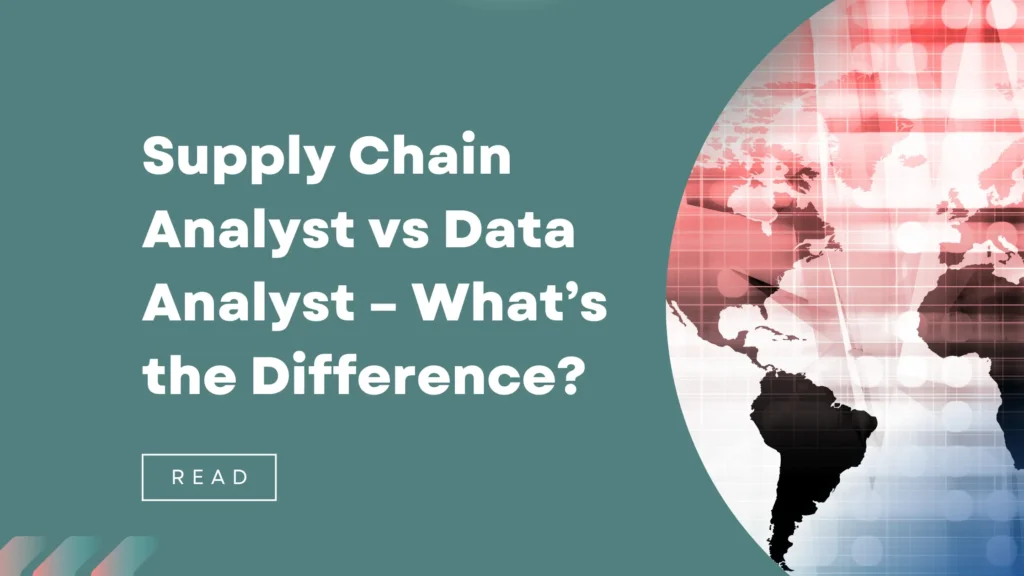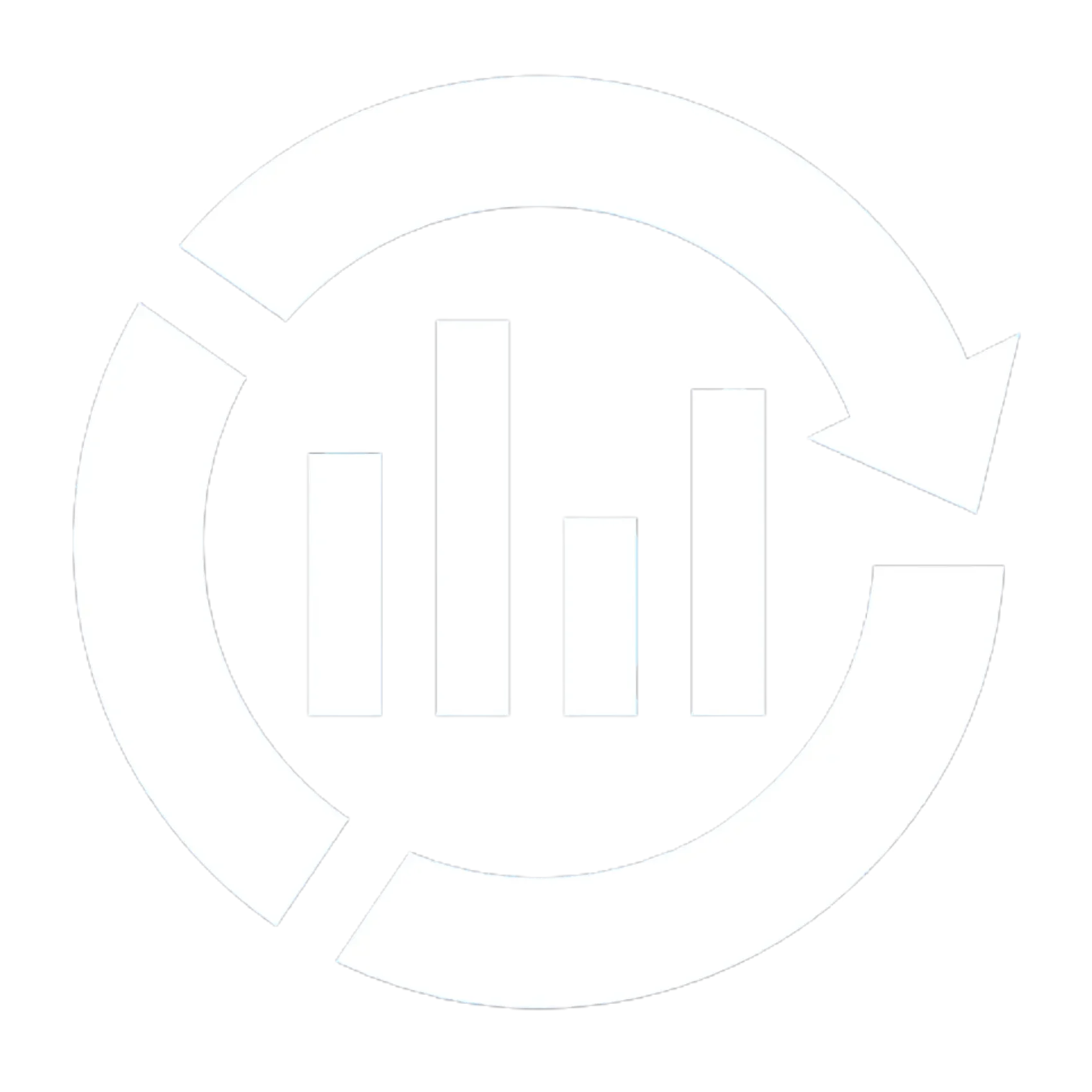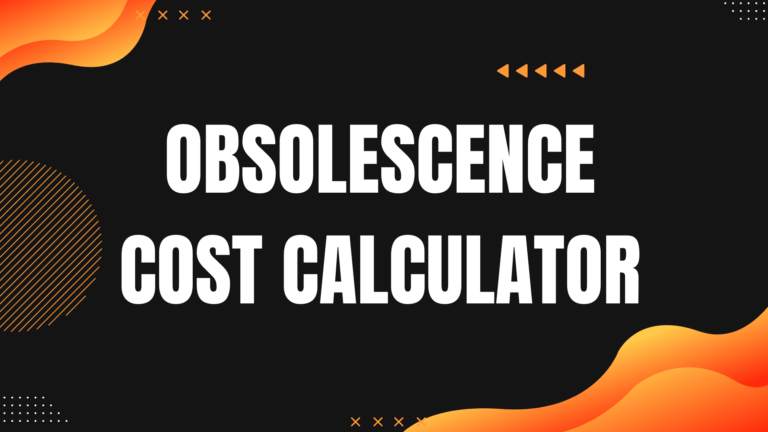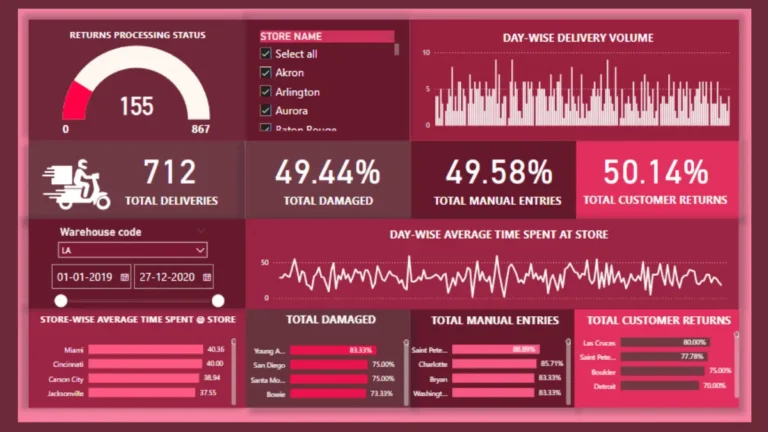If you’re stuck choosing between becoming a supply chain analyst or a data analyst, you’re not alone. Both roles are rising in demand across the U.S. job market, and at first glance, they seem to overlap in skills and tools. But here’s the catch: the industries they serve, the problems they solve, and the career paths they open are significantly different.

Understanding these distinctions is not just important — it’s career-defining. This guide breaks down the key differences, salary trends, tools used, required qualifications, and long-term growth prospects. By the end, you’ll know exactly which path aligns with your goals, interests, and earning potential.
Quick Comparison: Supply Chain Analyst vs Data Analyst
Before diving deep into job duties, tools, or salary trends, it helps to see a side-by-side snapshot. This quick comparison will give you an instant sense of how the two roles differ in terms of industry focus, core responsibilities, technical requirements, and growth potential.
If you’re deciding between the two career paths, this is the perfect place to start.
| Criteria | Supply Chain Analyst | Data Analyst |
|---|---|---|
| Primary Objective | Optimize the physical flow of goods and reduce operational inefficiencies | Analyze data to drive decisions across marketing, product, finance, or operations |
| Industry Focus | Manufacturing, logistics, healthcare, retail, e-commerce | Technology, finance, healthcare, education, SaaS |
| Key Responsibilities | Inventory management, demand forecasting, supplier performance, logistics cost control | Data extraction, dashboarding, statistical analysis, experimentation, reporting |
| Core Tools | Excel, SAP, Oracle, Power BI, JDA | SQL, Python, Tableau, R, Excel |
| Coding Requirement | Low to moderate | Moderate to high |
| Business Model Understanding | Deep focus on operations, supply chain structure, and vendor networks | Strong focus on customer behavior, digital products, and business KPIs |
| Remote Flexibility | Less remote due to operational involvement | Higher remote potential, especially in tech roles |
| U.S. Salary Range (2025) | $70,000 – $90,000 | $75,000 – $110,000 |
| Career Progression | SCM Manager, Procurement Lead, Director of Operations | BI Analyst, Data Scientist, Analytics Manager |
| Certifications | CSCP, CLTD, Six Sigma Green Belt | Google Data Analytics, Power BI, AWS Data Analytics |
What This Means for You:
- If you’re drawn to logistics, operational planning, and optimizing costs within physical product environments, and if supply chain analytics is your strength, then the supply chain analyst role could be the ideal fit for your career path.
- If you’re driven by data patterns, enjoy technical tools, and want flexibility across industries, data analytics may offer more long-term versatility.
Also Read: What is Supply Chain Analytics? Why is it Important?
What Does a Supply Chain Analyst Do?
A supply chain analyst focuses on optimizing the flow of goods and services within a business. Their main objective is to reduce costs, eliminate bottlenecks, and ensure products move efficiently from suppliers to customers.
Core Responsibilities
- Monitor inventory levels and manage stock replenishment
- Identify supply chain inefficiencies and propose cost-saving solutions
- Analyze supplier performance and logistics costs
- Coordinate with procurement, warehouse, and distribution teams
- Forecast demand using historical and seasonal trends
Common Industries
Supply chain analysts are heavily employed in:
- Manufacturing and automotive
- E-commerce and retail giants (Amazon, Walmart)
- Healthcare and pharmaceutical distribution
- Logistics and warehousing firms
Also Read : How to Become Supply Chain Analyst in 2025: Career Guide
What Does a Data Analyst Do?
A data analyst interprets large volumes of structured and unstructured data to help companies make informed decisions. They don’t just work with numbers — they turn those numbers into insights.
Core Responsibilities
- Extract, clean, and manipulate datasets from SQL databases or cloud platforms
- Build dashboards using Tableau or Power BI
- Analyze performance metrics and business KPIs
- Support marketing, product, finance, and HR teams with data insights
- Conduct A/B testing and funnel analysis
Common Industries
Data analysts have broader industry applications, such as:
- Fintech and banking
- SaaS and tech startups
- Healthcare analytics
- Education and government services
Skills Required for Each Role
While both supply chain analysts and data analysts deal with data, the nature of their work—and the skills needed to succeed—are very different. One role is built around understanding operational flows and vendor dynamics, while the other focuses on data manipulation, insight generation, and digital tools.
In this section, we break down both technical and soft skills that employers in the U.S. commonly look for, along with examples of where each skill applies.
Technical Skills
| Skill | Supply Chain Analyst | Data Analyst |
|---|---|---|
| Excel | ✔️ Advanced | ✔️ Advanced |
| SQL | ✔️ Basic–Intermediate | ✔️ Intermediate–Advanced |
| Python/R | Optional | Often required |
| BI Tools | Power BI, SAP Analytics | Tableau, Looker |
| ERP Systems | SAP, Oracle, NetSuite | Rarely used |
Soft Skills
- Problem-solving and analytical mindset
- Communication and stakeholder management
- Time management and cross-functional coordination
- Data storytelling (more critical for data analysts)
Salary Comparison: Who Earns More in the U.S.?
While both roles are financially rewarding, data analysts tend to edge out supply chain analysts on average due to their tech exposure and cross-functional reach.
National Averages (2025 Estimates)
Understanding projected salaries in each role is one of the first questions many U.S. job seekers have. While exact compensation varies by region, industry, and experience, the estimates below reflect current labor trends and reliable 2025 salary data.
Supply Chain Analyst Salaries in the U.S. (2025 Estimates)
These figures represent national averages and typical ranges across cost-of-living tiers:
| Experience Level | Annual Salary Range | Common Titles |
|---|---|---|
| Entry Level (0–2 years) | $60,000 – $72,000 | Supply Chain Analyst, Logistics Analyst |
| Mid-Level (2–5 years) | $75,000 – $88,000 | Senior Supply Chain Analyst, Demand Planner |
| Senior Level (5+ years) | $95,000 – $110,000+ | Sourcing Manager, Operations Manager |
High-cost metro areas like New York, San Francisco, and Chicago can push senior-level pay closer to $120K–$130K, especially with bonuses and performance incentives.
Data Analyst Salaries in the U.S. (2025 Estimates)
Data analysts generally enjoy slightly higher average compensation—particularly if working with SQL, Python, or BI tools across multiple industries:
| Experience Level | Annual Salary Range | Common Titles |
|---|---|---|
| Entry Level (0–2 years) | $65,000 – $78,000 | Data Analyst, Junior Analyst |
| Mid-Level (2–5 years) | $85,000 – $100,000 | Senior Data Analyst, BI Analyst |
| Senior Level (5+ years) | $110,000 – $130,000+ | Analytics Manager, Data Scientist |
In competitive tech hubs and industries like fintech or SaaS, data analysts with advanced skills may command total compensation packages exceeding $140K.
Pro Tip for Aspirational Job Seekers
Negotiate using benchmark data. Use salary platforms like Glassdoor, Levels.fyi, or Payscale to ground your expectations during interviews, especially estimating cost-of-living adjusments per city.
Specialize in niche tools or domains. Certifications like Google Analytics, AWS Data Analytics, ASCM CSCP, or Six Sigma Green Belt can boost salary potential by 10–25%.
Target industries with scale and data maturity. Retail giants, e-commerce, and manufacturing tend to pay well for experienced supply chain professionals. Technology-driven and finance firms often pay more for data analysts with Python, Tableau, or machine learning experience.
Career Path & Progression
Understanding how your role can evolve over time is critical when making a career choice. Both supply chain analysts and data analysts offer upward mobility, but the direction and destination differ significantly. While one path moves toward operations leadership, the other often leads into advanced analytics or data science. Your long-term goals—whether they include managing global logistics or building predictive algorithms—should influence which path you choose.
Below is a breakdown of how each role typically evolves over a 3, 5, and 10-year span, including common titles, transitions, and opportunities for specialization.
Supply Chain Analyst Career Growth
- Supply Chain Analyst
- Senior SCM Analyst
- Sourcing Manager / Logistics Head
- Director of Operations / Supply Chain VP
Typical transition: into procurement, demand planning, or operations strategy.
Data Analyst Career Growth
- Data Analyst
- BI Analyst or Data Engineer
- Data Scientist / Analytics Manager
- Head of Data / Chief Analytics Officer
Typical transition: into data science, AI/ML, product analytics, or tech leadership.
Certifications That Can Boost Your Career
Choosing the right certification can fast-track your career, boost your salary, and make your resume stand out in a crowded job market. Whether you’re aiming for a role as a supply chain analyst or data analyst, the right credential can prove your expertise and open doors to better opportunities.
Certifications aren’t just resume boosters—they signal to employers that you’re serious, skilled, and ready to contribute from day one. Below are the most respected certifications in each field, widely accepted by U.S. employers across industries.
Top Certifications for Supply Chain Analysts
- Certified Supply Chain Professional (CSCP) – APICS
- Certified in Logistics, Transportation and Distribution (CLTD)
- Six Sigma Green Belt
- SCPro™ Certification – CSCMP
- SAP Certified Application Associate
Read More: Top 7 Certifications for Supply Chain Professionals in 2025
Top Certifications for Data Analysts
- Google Data Analytics Certificate (Coursera)
- Microsoft Power BI Data Analyst Associate
- IBM Data Analyst Professional Certificate
- Cloudera Data Analyst Certification
- AWS Certified Data Analytics
External link suggestion: Data Analytics Career Path
Which Role Should You Choose?
Choosing between becoming a supply chain analyst and a data analyst isn’t just about comparing job titles—it’s about aligning your skills, interests, and long-term goals with the right career path. Both roles offer strong salaries, high demand, and opportunities for growth. However, they solve different problems, require different day-to-day work, and exist in different kinds of organizations.
This section will help you reflect on what motivates you professionally and where your strengths lie, so you can make an informed decision that lasts.
Choose Supply Chain Analyst If You:
- Enjoy working with physical products and operations
You’re fascinated by how goods move from factories to shelves, and you thrive in roles where logistics, timelines, and vendor coordination matter. - Prefer structured processes and business-driven decisions
You want to optimize tangible outcomes like delivery speed, inventory turns, or procurement savings—not just dashboards. - Like working with tools such as Excel, ERP systems, and planning software
You’re comfortable in structured business systems like SAP, Oracle, or JDA, and you enjoy solving operational puzzles. - Want to build a long-term career in manufacturing, logistics, or e-commerce
You see yourself growing into roles like Operations Manager, Sourcing Lead, or Director of Supply Chain in the future. - Have strong business acumen but prefer low-code environments
You like data, but you don’t want to write complex scripts or dive deep into statistical models.
Choose Data Analyst If You:
- Enjoy solving abstract problems using numbers and trends
You’re curious about user behavior, product performance, or campaign effectiveness—and love turning raw data into strategy. - Have or want to build strong technical skills
You’re willing to learn SQL, Python, or R to handle large datasets, build models, or automate reporting. - Value remote flexibility and broader industry access
You want the option to work across industries—from tech to healthcare to finance—and often from anywhere. - Like experimenting and influencing decision-making through insights
Whether it’s A/B testing or churn analysis, you’re excited about finding patterns others miss and driving decisions based on data. - Aim to eventually transition into roles like Data Scientist, Product Analyst, or Head of Analytics
You see yourself going deeper into the data space and working at the intersection of business and technology.
U.S. Job Market Trends: 2025 Outlook
As we move through 2025, both supply chain and data analyst roles remain in solid demand—albeit in different ways. Economic headwinds, technological change, and evolving labor dynamics shape hiring trends. Below, you’ll find evidence-backed forecasts and context to help you understand how each field is evolving.
Economic Context and Job Market Snapshot
In early 2025, the U.S. job market showed signs of cooling: only ~73,000 jobs were added in July, unemployment ticked up to 4.2%, and revisions to prior months removed over 250,000 positions from earlier tallies Business Insider. Despite this softness, demand for analyst roles—both supply chain and data—remained resilient due to consistent business needs in logistics, automation, and actionable insights.
Supply Chain Analyst Demand
According to the U.S. Bureau of Labor Statistics (BLS), employment of logisticians—a role closely aligned with supply chain analysts—is expected to grow by 19% between 2023 and 2033, compared to just 4% for all occupations Bureau of Labor Statistics+2Bureau of Labor Statistics+2Procurement Tactics+2. That translates to about 26,100 openings per year driven by new demand and workforce turnover Financial Times+15Bureau of Labor Statistics+15Coursera+15.
Meanwhile, cost pressures, nearshoring shifts, and tariff volatility are pushing organizations to hire professionals capable of improving efficiency, managing risk, and reducing supply chain expenses horizonrecruit.com+4KPMG+4The Wall Street Journal+4. Supply chain roles that combine analytics skills with logistical expertise are especially sought after, and automation investments—such as robotics and AI—are accelerating compensation for those who bring both operational and technical strengths The Wall Street Journal+1Investopedia+1.
Data Analyst Job Growth
The broader data job market continues to expand rapidly. Estimates suggest there were approximately 220,000 data-related roles in the U.S. in 2025 Towards AI. The BLS projects data science and analytics occupations to grow significantly: data scientists by 36% and related roles by 23% through 2032—both well above the average 4–5% across all jobs Bureau of Labor StatisticsBureau of Labor Statistics365 Data Science.
Even amid macroeconomic uncertainty, 87% of current analysts report increased strategic importance in their organizations, and 70% say AI and automation are making them more effective—not making them obsolete Alteryx.
In-Demand Industries
- Supply Chain Analytics: Manufacturing, retail, logistics services, and near-shoring–focused operations are rapidly hiring analysts to manage cost‑to‑serve, supplier risk, and automation roadmaps KPMG+1The Resume Whisperer+1.
- Data Analytics: Healthcare, finance, e-commerce, SaaS, and marketing teams are investing heavily in analytics to drive personalization, operational efficiencies, and product development The Resume Whisperercoherentsolutions.com.
Key Hiring Trends to Track
- Automation & AI Integration: Organizations across logistics and analytics are investing in tools—like warehouse robotics, predictive forecasting, and real-time dashboards—that require hybrid skill sets combining domain knowledge and technical aptitude Procurement TacticsKPMGTowards AI.
- Skill Gaps Are Real: Companies report talent shortages in digital and analytics roles, especially supply chain digital transformation initiatives—90% of supply chain leaders say they lack skills needed for digitization in 2025 Procurement TacticsKPMG.
- Greater Use of Data in SCM: Poor master data quality remains a barrier—only 53% of leaders feel their data is adequate—but improving through investments in ERP, IoT, and BI tools Procurement Tactics.
- Remote Hiring Trends: Data analysts benefit more from remote flexibility, especially across tech and consulting firms. Supply chain roles often require on-site or hybrid work due to the need for physical coordination, though real-time logistics monitoring is enabling more flexibility.
Summary: What the Trends Mean for You
Data Analysts continue to see strong growth across industries due to businesses’ reliance on data-driven decision-making, AI adoption, and cross-functional strategic use of metrics.
Supply Chain Analysts will benefit from rising demand driven by global trade shifts, nearshoring, and automation investments. Roles that fuse process knowledge with analytics capability are in high demand.






